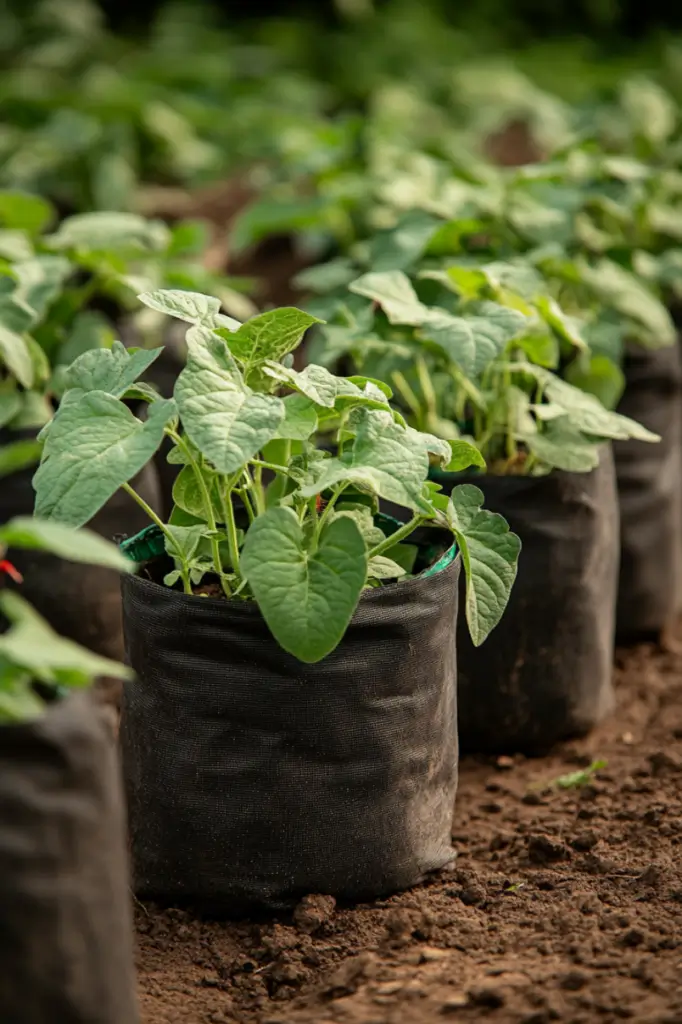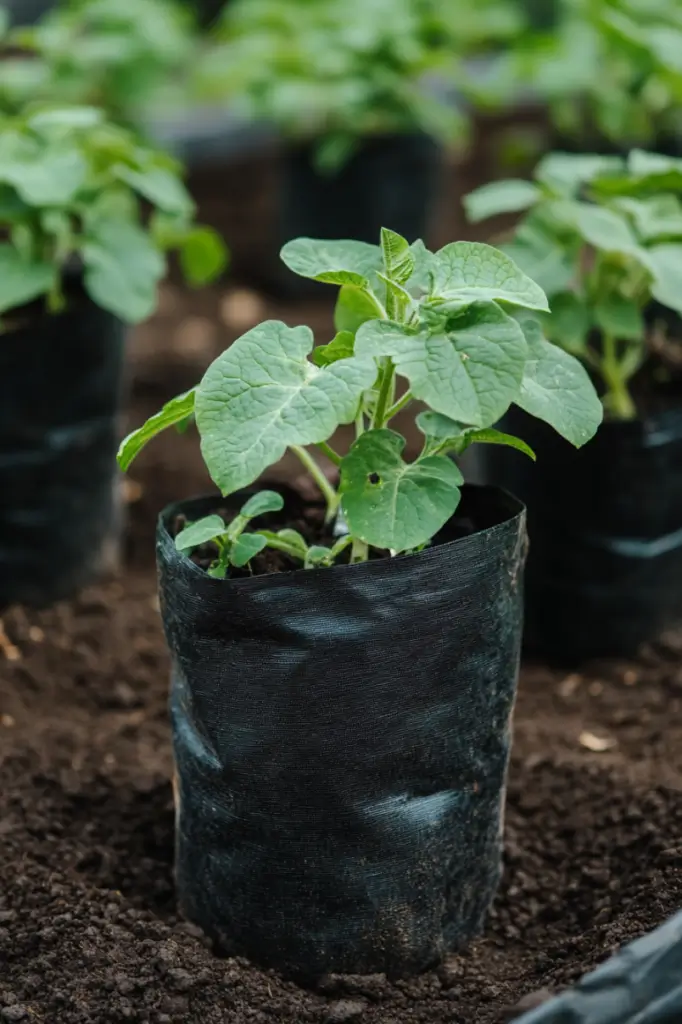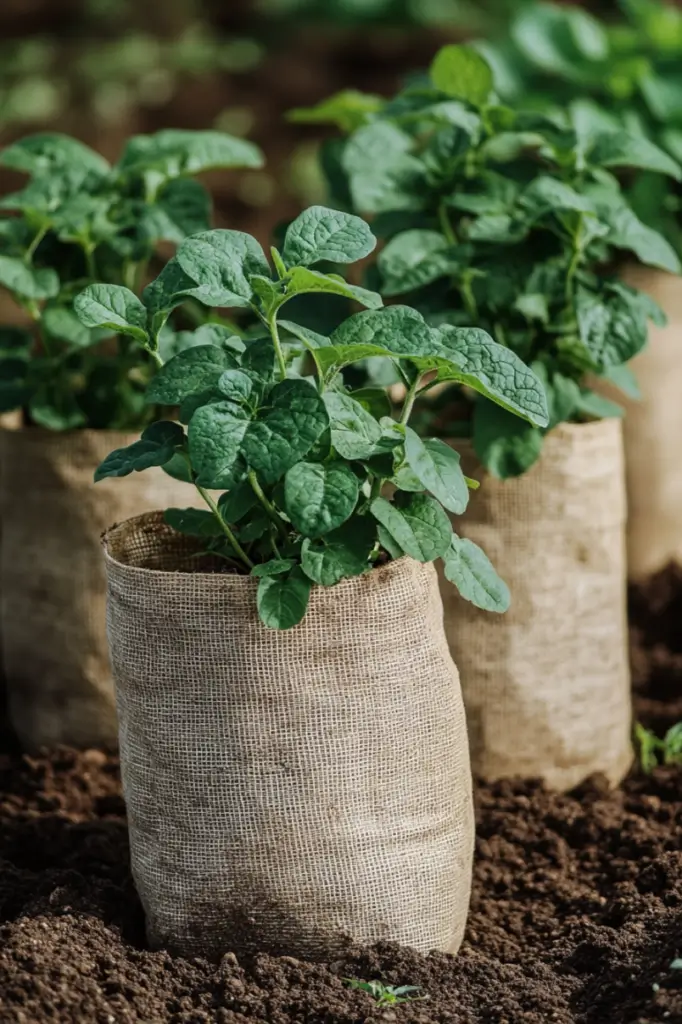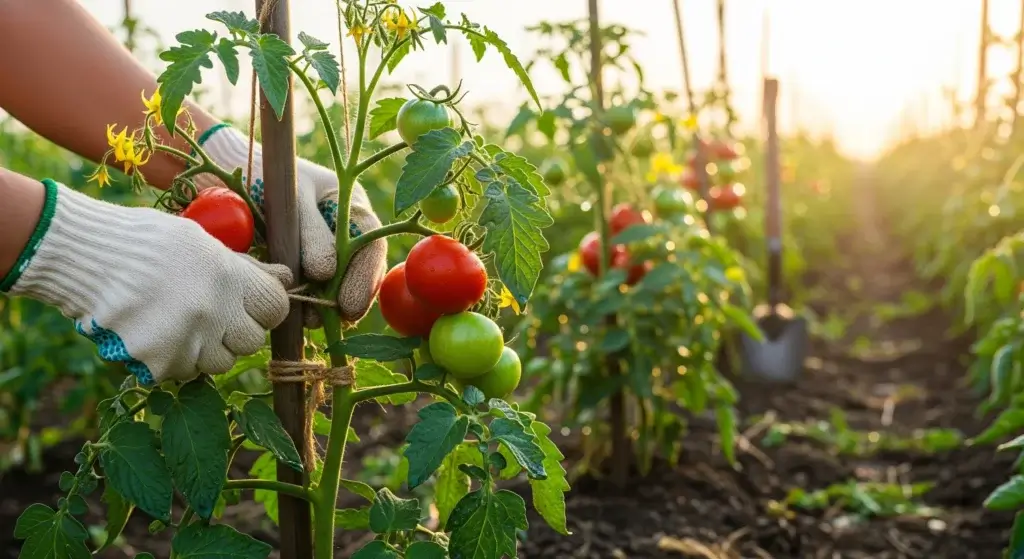
Growing potatoes in grow bags is a fantastic way to maximize space and ensure a bountiful harvest.
One crucial step in this process is hilling, a technique that can significantly boost your potato yield.
In this guide, we’ll delve into the details of hilling potatoes in grow bags, covering what it is, how often you should do it, what materials to use, and step-by-step instructions.
Let’s get started!
What is the Hilling Process for Potatoes?
Hilling is the process of covering the growing potato plants with soil or another medium.
This encourages the development of more tubers and protects them from sunlight, which can cause the potatoes to turn green and become inedible.
Essentially, hilling provides a larger area for the potato tubers to grow and helps prevent diseases.
When you hill potatoes, you’re adding extra soil or mulch around the base of the plant as it grows.
This not only supports the plant but also helps to keep the tubers underground, safe from sunlight and pests.
- Read also: Potato Watering Requirements: Keep Your Potatoes Healthy
- Read also: The Ultimate Guide to Hilling Potatoes in Containers
How Often Should I Hill My Potatoes?
The frequency of hilling depends on the growth rate of your potato plants.
Hilling your potatoes in grow bags is similar to hilling them in the ground, but with a few adjustments:
- Start hilling: When your potato plants reach about 6-8 inches tall, gently add more potting mix around the base of the plants, covering the lower stems but leaving the top leaves exposed. At this point, you can add about 3-4 inches of soil or mulch around the base of the plant.
- Second hilling: Repeat this process about 2-3 weeks later, or when the plants have grown significantly.
- Optional third hilling: Depending on the size of your grow bag, you might be able to do a third hilling, but it’s not always necessary. This consistent addition of soil ensures that the developing tubers remain covered and protected.
Key points to remember when growing potato in bags:
- Grow bags have limited space: You won’t be able to hill as high as you would in the ground.
- Avoid overfilling: Too much soil can restrict root growth.
- Use a good potting mix: This will provide the necessary nutrients for your potatoes.

What to Hill Potatoes With?
When it comes to hilling potatoes, you have a few options for the hilling material.
Each material has its own benefits and can be chosen based on what you have available and your specific gardening needs.
Here’s a detailed look at the different materials you can use for hilling potatoes:
Soil
Soil is the most common and readily available option for hilling potatoes.
Soil is usually easy to find and affordable.
You can use the soil from your garden or purchase it from a gardening store.
Ensure the soil is loose and well-draining to prevent waterlogging, which can lead to rot and other issues.
Compost
Compost is another excellent option for hilling potatoes.
It’s not only beneficial for covering the plants but also adds nutrients to the soil, promoting healthier plants.
You can mix compost with soil for the initial planting and for subsequent hillings.
This ensures that your potato plants get a steady supply of nutrients.
Straw
Straw is a lightweight and easy-to-work-with material for hilling potatoes.
However, you need to make sure it’s free of weed seeds to prevent unwanted plants from growing.
Straw is easy to handle and spread around the potato plants.
It helps insulate the soil, keeping it cool and retaining moisture.
Straw can help prevent soil erosion, especially in areas with heavy rainfall.
Leaves
Leaves can also be used for hilling potatoes, especially if you have plenty of fallen leaves in your garden.
Shredded leaves are best because they decompose more quickly and provide better air flow.
Leaves are often readily available in gardens, especially in the fall.
As they decompose, leaves add organic matter and nutrients to the soil.
Leaves can help retain moisture in the soil, which is beneficial for potato growth.

How to Hill Up Potatoes in a Grow Bag?
Hilling potatoes in grow bags is slightly different from hilling in the ground, but the principles remain the same.
Here’s a step-by-step guide:
Step 1: Prepare your grow bags
Start with a good-quality grow bag filled with a mixture of soil and compost.
Plant your seed potatoes about 4 inches deep.
Step 2: Initial planting
Cover the seed potatoes with soil, leaving about 4 inches of space from the top of the bag.
Water thoroughly and place the grow bag in a sunny spot.
Step 3: First hilling
When your potato plants reach 6-8 inches tall, add soil or your chosen hilling material around the base of the plants.
Be careful not to cover the leaves completely. Leave about 2-3 inches of the plant exposed.
Step 4: Continue hilling
Repeat the hilling process every two to three weeks or whenever the plants grow another 6-8 inches.
Keep adding soil until the grow bag is nearly full or the plants start to flower.
Step 5: Watering
Water your potato plants regularly, ensuring the soil remains moist but not waterlogged.
The grow bags provide excellent drainage, but they can dry out more quickly than traditional garden beds.

- Read also: The Ultimate Guide to Companion Plant for Luscious Potatoes
- Read also: Spudtacular Sprouts: The Ultimate DIY Potato Grow Bag Guide
Conclusion
Hilling potatoes in grow bags is a simple yet effective technique to maximize your harvest.
By regularly adding soil or other hilling materials around the growing plants, you can protect your developing tubers and encourage the production of more potatoes.
Remember to start hilling when your plants are 6-8 inches tall and continue the process throughout the growing season.
With a little effort and care, you’ll enjoy a plentiful potato harvest from your grow bags.
FAQs
Ensure you are hilling your potatoes regularly and providing adequate water and sunlight. Consider using a fertilizer specifically designed for potatoes.
Hilling in grow bags helps maximize potato yield by providing more space for tubers to develop. It also protects the potatoes from sunlight, preventing them from turning green and bitter.
Hilling in grow bags helps to prevent pests from prevailing, retain moisture, and decrease the weed seed bank. It also allows for easy access to the potatoes for harvesting.



